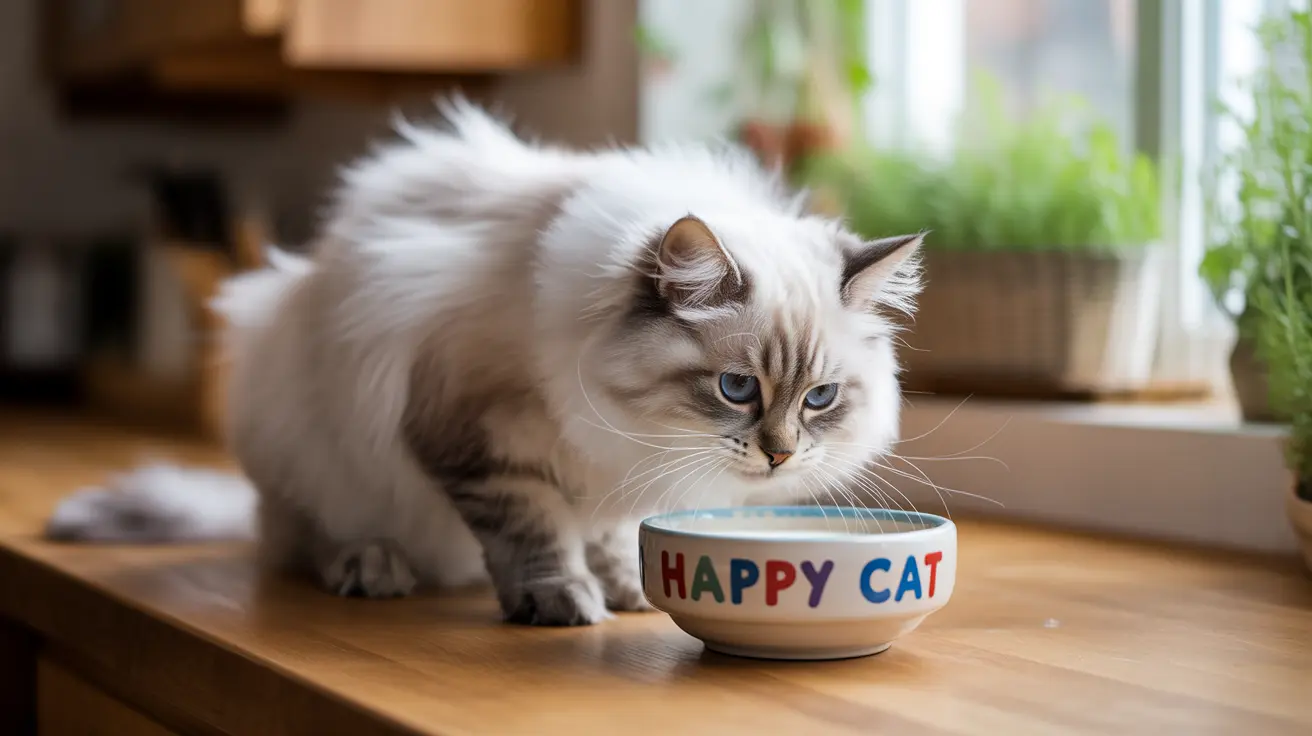The Natural Attraction: Why Cats Are Drawn to Milk
Cats' attraction to milk stems from several biological and evolutionary factors. Their highly developed sense of smell allows them to detect the high fat content in milk, which their bodies naturally recognize as a potential energy source. The creamy texture and rich protein content appeal to their carnivorous instincts, making milk an enticing treat despite their inability to properly digest it.
Additionally, positive associations from kittenhood play a significant role. During their early weeks of life, kittens associate their mother's milk with comfort, nourishment, and security. This early imprinting may contribute to adult cats' continued interest in milk-like substances.
The Lactose Intolerance Problem
While cats may be attracted to milk, most adult cats are actually lactose intolerant. After weaning, typically between 6-12 weeks of age, cats experience a dramatic decrease in lactase production – the enzyme necessary for breaking down lactose in milk. This reduction can be as high as 90%, leaving most adult cats unable to properly digest dairy products.
When lactose-intolerant cats consume milk, the undigested lactose travels to the colon where bacteria ferment it, potentially leading to uncomfortable and harmful symptoms.
Health Risks of Giving Milk to Cats
Offering milk to your adult cat can result in several health issues:
- Digestive upset and diarrhea
- Vomiting and nausea
- Abdominal pain and bloating
- Potential dehydration
- Long-term gut flora disruption
Safe Alternatives to Regular Milk
If you want to offer your cat a milk-like treat, consider these safer alternatives:
- Cat-specific milk products with reduced or no lactose
- Special wet food formulations that provide extra hydration
- Fresh, clean water (always the best choice)
- Commercial cat treats designed for adult cats
Ensuring Proper Hydration Without Milk
Instead of offering milk, focus on encouraging proper hydration through these methods:
- Provide multiple fresh water sources throughout your home
- Consider a cat water fountain, as many cats prefer moving water
- Include wet food in their diet
- Place water bowls away from food dishes, as cats naturally prefer separated resources
Frequently Asked Questions
Why do cats seem attracted to milk if most are lactose intolerant?
Cats are attracted to milk primarily because of its high fat and protein content, which their sensitive noses can detect. This attraction is also influenced by positive associations from nursing as kittens, even though their bodies can no longer properly digest milk as adults.
What symptoms indicate my cat is lactose intolerant after drinking milk?
Common symptoms include diarrhea, vomiting, bloating, and general digestive discomfort. These typically appear within 8-12 hours of consuming milk. Some cats may also show signs of lethargy or decreased appetite.
Can adult cats safely drink any type of milk or milk alternatives?
While regular cow's milk should be avoided, there are specially formulated "cat milk" products available that have had the lactose removed or broken down. These are generally safe for cats, but should still be given in moderation as treats rather than regular parts of their diet.
How does cow's milk differ from cat milk, and why is it harmful to adult cats?
Cow's milk contains significantly more lactose than cat milk and has different protein and fat ratios. Adult cats lack the necessary enzymes to digest cow's milk properly, which can lead to digestive issues and discomfort.
What healthy and safe treats can I give my cat instead of milk?
Safe alternatives include commercial cat treats, small pieces of cooked lean meat, cat-specific milk replacers, and specially formulated cat treats. Always introduce new treats gradually and in moderation.
Conclusion
While cats may show interest in milk, it's important to understand that this attraction doesn't mean milk is good for them. Instead of offering milk, focus on providing your cat with a balanced diet and plenty of fresh water. If you want to give your cat a special treat, opt for specially formulated cat milk products or other veterinarian-approved alternatives.






